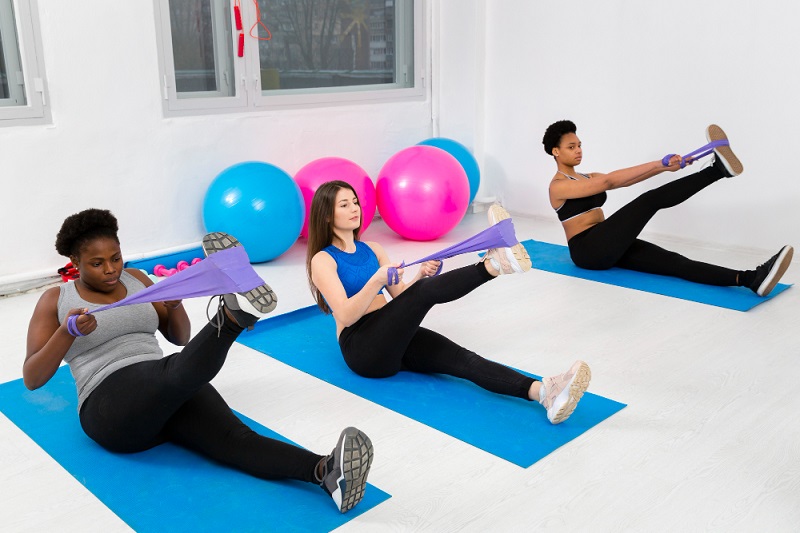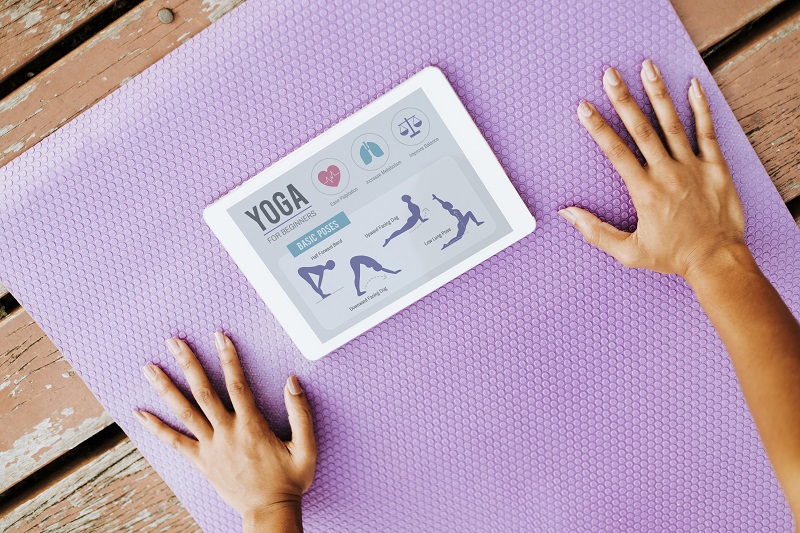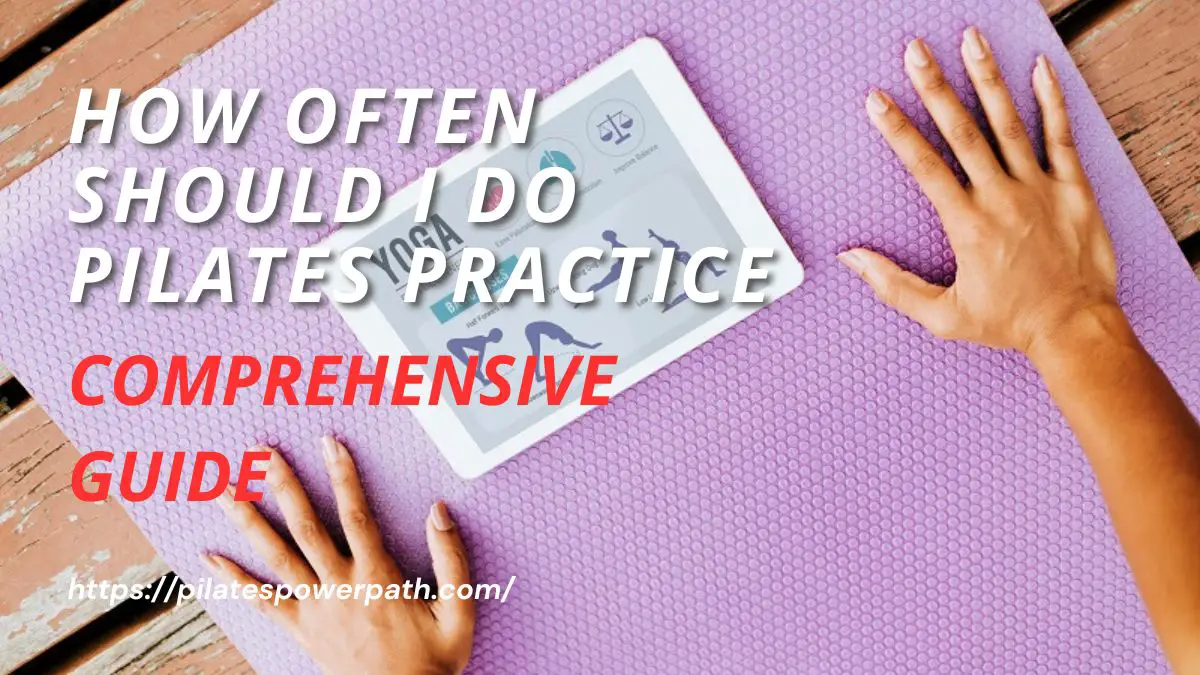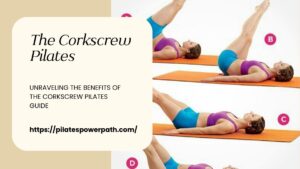The frequency of Pilates varies from individual to individual. While some may benefit from a daily routine, others may find a thrice-a-week schedule more suitable. This largely depends on one’s personal fitness goals, level of experience, and available time.
Overdoing Pilates without providing adequate recovery time for the body can be counterproductive. Ideally, a balance should be struck between workout intensity and rest periods to allow the body to recover and adapt.
As a general rule, Joseph Pilates, the founder of this practice, recommended doing Pilates three times a week. However, one can adjust this based on their fitness level and goals. Regularity and consistency are key to reaping the benefits of Pilates.
And that’s not all. In the upcoming sections, we will delve deeper into how to craft a Pilates routine that suits your needs, the role of a professional Pilates instructor, and much more. Stay tuned.
Understanding the Basics of Pilates
What is Pilates?
Pilates is a physical fitness system designed to strengthen the body, increase flexibility, and improve overall health. Developed in the early 20th century by Joseph Pilates, it focuses on controlled movements that engage both the mind and body. The exercises can be performed using specialized equipment or on a mat, making it adaptable for various fitness levels and needs.
The Core Principles of Pilates
The core principles of Pilates include control, precision, concentration, flow, centering, and breath. These principles guide all Pilates exercises, promoting balance and harmony. Control is all about muscle engagement and accurate movements, while precision emphasizes quality over quantity. Concentration and flow ensure the mind-body connection, centering focuses on the core, and breath supports the execution of each movement.
Brief History of Pilates
Pilates was created by German-born Joseph Pilates during World War I to help rehabilitate bedridden soldiers. He later migrated to the U.S., where he and his wife opened a fitness studio in New York City. Their method, initially popular among dancers, gradually gained global recognition for its ability to enhance physical fitness and well-being. Today, Pilates is practiced worldwide and continues to evolve, integrating modern understanding of anatomy and movement principles.
The Benefits of Regular Pilates Practice
Practicing Pilates routinely can transform your physical and mental well-being in significant ways. Below, we explore a few key benefits that regular Pilates practice offers.
Improved Core Strength and Flexibility
Pilates focuses on building core strength, which is essential for overall body strength and stability. The body’s core includes the muscles in the abdomen, lower back, hips, and pelvis. By strengthening these muscles through Pilates, you can enhance your balance and coordination.
Additionally, Pilates exercises are designed to increase flexibility. The controlled, flowing movements gradually stretch and lengthen the muscles, improving flexibility over time. This can lead to better performance in other physical activities and decrease the risk of injuries.
Enhanced Posture and Alignment
One of the primary goals of Pilates is to improve body alignment and posture. The exercises emphasize correct spinal and pelvic alignment, which can help alleviate back pain and prevent future issues. Regular Pilates practice can lead to better posture, giving you a taller, leaner appearance and increasing your self-confidence.
Stress Reduction and Mental Well-being
Pilates is as much a mind workout as it is a physical one. The combination of controlled breathing and concentration required in Pilates can have a calming effect on the mind, helping to reduce stress and anxiety. By focusing on the movements, you can also foster a deeper mind-body connection, promoting mental well-being and relaxation.
Setting Your Pilates Goals
Embarking on a Pilates journey begins with setting clear and realistic goals. This process enables you to focus your efforts and measure your progress effectively. Herein are a few steps to guide you in setting your Pilates goals.
Identifying Your Fitness Objectives
Before you start your Pilates practice, it’s crucial to identify what you want to achieve. Are you looking to improve your core strength, enhance your flexibility, or improve your posture? Or perhaps you’re after the mental benefits like stress reduction and improved concentration? Your fitness objectives will guide your Pilates routine, helping you choose the exercises and frequency that align with your goals.
Short-Term and Long-Term Goals
When setting your goals, it’s advisable to consider both short-term and long-term objectives. Short-term goals provide immediate motivation and a sense of accomplishment, while long-term goals keep you focused on the bigger picture. For instance, a short-term goal could be mastering a specific Pilates move, while a long-term goal could be improving your overall body strength and flexibility.
Creating a Realistic and Achievable Plan
Once you have your goals in place, the next step is to create a plan that will help you achieve them. This plan should be realistic, considering factors such as your current fitness level, available time, and resources. You may want to start with a few simple exercises and gradually increase the intensity as your strength and flexibility improve. It’s also important to remember that progress in Pilates is a journey, not a race. It’s okay to adjust your plan as you go along to suit your evolving needs and capabilities.
Factors Influencing Your Pilates Frequency
The frequency of your Pilates sessions can greatly impact your progress and the benefits you reap from the practice. However, determining the right frequency involves considering several factors.
Your Current Fitness Level
Your current physical condition plays a significant role in determining how often you should practice Pilates. If you’re new to fitness or coming off a long break, it’s wise to start slowly, perhaps with one or two sessions per week. As you build strength and stamina, you can gradually increase the frequency.
Time Availability and Schedule
Your daily routine and time availability also influence your Pilates frequency. While it’s important to make time for your fitness, it’s equally vital to ensure you’re not overly stretching yourself to fit in workouts. Aim to create a balanced schedule that aligns with your lifestyle and responsibilities.
Budget Considerations
Lastly, budget considerations can also play a part in determining your Pilates frequency. If you’re attending a Pilates studio, the cost per session may influence how often you can afford to go. There are, however, numerous resources available online, including guides and video tutorials, which can make practicing Pilates at home a viable and cost-effective option.

How Often Should Beginners Do Pilates?
Frequency Recommendations for Pilates Newbies
For individuals new to Pilates, the recommended frequency is generally two to three times per week. This allows the body enough time to adapt to the new exercises, while also ensuring consistent practice to reinforce the movements and principles of Pilates. However, each individual is different, and it’s important to listen to your body’s signals. If you feel overly fatigued or sore, it might be advisable to reduce the frequency or intensity of your workouts.
The Importance of Consistency in Building a Foundation
Consistency is key when starting a new fitness regimen like Pilates. Regular practice helps to establish muscle memory, ingraining the movements and techniques of Pilates into your body. Moreover, consistent practice can help you build a solid foundation of core strength and flexibility, which is critical for more advanced Pilates exercises and for preventing injuries.
Progress Tracking for Beginners
Tracking your progress is a vital part of your Pilates journey, especially for beginners. It helps to keep you motivated, enables you to see the progress you’re making, and allows you to adjust your practice as needed. You can track progress in several ways, including noting changes in your strength and flexibility, keeping a journal of your workouts and how you feel after each session, or even taking periodic photos to visually document physical changes.
Intermediate Pilates Practice Frequency
Advancing to an Intermediate Level
As your Pilates practice deepens, you may find yourself progressing to more challenging exercises. The intermediate level is marked by an increased complexity of movements, requiring greater strength, balance, and coordination. To facilitate this transition, it’s often helpful to increase your Pilates frequency to about three to four times per week, allowing your body to adapt to the heightened physical demands.
Balancing Pilates with Other Forms of Exercise
At the intermediate level, it’s also common to incorporate other forms of exercise into your fitness regimen. Balancing Pilates with activities like weight training, cardio, or yoga can offer a holistic approach to fitness, ensuring all major muscle groups are targeted and various aspects of fitness are addressed. Remember to schedule adequate rest days between workouts to promote recovery and prevent overtraining.
Tips for Avoiding Plateaus
One challenge that intermediate Pilates practitioners often face is hitting a plateau, where progress seems to stall. This can be discouraging, but there are strategies to overcome this hurdle. Varying your workouts by trying new moves or adjusting the intensity can challenge your body in new ways and stimulate further progress. Additionally, ensuring proper nutrition and adequate rest can support your body’s recovery and growth, helping you push past the plateau and continue advancing in your Pilates journey.
Advanced Pilates: Maintaining and Challenging
Frequency Recommendations for Advanced Practitioners
Once you have reached an advanced level in your Pilates journey, your body will have likely adapted to a higher volume of exercise. At this point, you could consider increasing your Pilates frequency to four to five times per week, depending on your physical condition and other commitments. It’s crucial, however, to maintain a balanced approach, ensuring enough rest and recovery time to avoid overtraining or injury.
Incorporating Specialized Pilates Routines
As an advanced practitioner, you may also want to explore specialized Pilates routines. For example, Reformer Pilates, which uses a machine to provide resistance, can add a new level of challenge to your workouts and help to further develop strength and flexibility. Equally, incorporating Pilates routines with props like resistance bands or Pilates balls can help diversify your workouts and target different muscle groups.
Setting New Goals for Advanced Pilates Practice
At the advanced stage, setting new and ambitious goals can provide a fresh challenge and keep your motivation high. This could involve mastering a complex Pilates movement, increasing the intensity of your workouts, or even training to become a Pilates instructor yourself. Remember, the continual pursuit of improvement is a fundamental principle of Pilates practice, and there’s always a new goal to set, a new challenge to overcome, or a new skill to learn.
The Role of Pilates Instructors
How Instructors Help Tailor Your Practice Frequency
Pilates instructors play a crucial role in helping you determine the right frequency of your practice based on your skill level, fitness goals, and physical condition. With their expertise and understanding of your capabilities, they can suggest a tailored schedule that optimizes your progress while ensuring safety. Their guidance can help you achieve a balance between pushing your limits and allowing your body enough time for recovery and adaptation.
The Benefits of Guided and Supervised Sessions
Guided and supervised Pilates sessions offer the advantage of immediate feedback and correction on your technique. Instructors will ensure that you’re performing each movement correctly and efficiently, helping to enhance the effectiveness of your workouts and prevent injury. This direct interaction also offers the opportunity for instructors to modify exercises to suit your ability or accommodate any specific health concerns.
Finding the Right Pilates Instructor
Finding the right Pilates instructor is a personal journey and depends on various factors such as teaching style, experience, specialization, and personality. It’s important to find an instructor who not only has the necessary qualifications and experience but also aligns with your learning preferences and fitness goals. Taking trial sessions, reading reviews, and seeking recommendations can be worthwhile strategies to find an instructor who is a good fit for you. Remember, a supportive and competent instructor can significantly enhance your Pilates experience and journey toward improved fitness.

Designing Your Ideal Pilates Schedule
Daily vs. Weekly Pilates Practice
Deciding between a daily or weekly Pilates practice depends on your personal goals, availability, and current fitness levels. For some, a daily routine of shorter sessions may work best, while others might prefer longer sessions spread throughout the week. While daily practice can help establish a routine and accelerate progress, it’s essential to listen to your body and ensure adequate rest to avoid fatigue or injury.
Balancing Pilates with Cardio and Strength Training
Balancing Pilates with cardio and strength training offers a balanced fitness approach. Cardio exercises such as running or cycling can enhance your cardiovascular fitness and endurance, while strength training can help build muscle mass and strength. Pilates complements these by improving flexibility, balance, and core strength. It’s advisable to plan your week to include all these aspects of fitness, ensuring a diverse and holistic approach to your fitness regimen.
Adapting Your Schedule to Your Goals
Your Pilates schedule should be reflective of your individual fitness goals. If your aim is to build strength or improve flexibility, your Pilates sessions could focus more on these areas. If weight loss is your goal, incorporating more cardio alongside Pilates could be beneficial. Remember, your schedule isn’t set in stone – as your fitness levels improve and goals evolve, so should your workout schedule. Regular reassessment and adjustment of your schedule can ensure it remains challenging, motivating, and aligned with your objectives.
Read More: Demystifying Pilates Class Costs
Tips for Staying Consistent
Overcoming Common Barriers to Consistent Practice
One of the keys to success in Pilates, or any fitness regimen, lies in consistent practice. However, there can be various barriers preventing this, such as a lack of time, motivation, or unforeseen circumstances. It’s crucial to identify these challenges and develop strategies to overcome them. For example, scheduling your Pilates sessions at a fixed time each day can help make it a regular part of your routine. Similarly, choosing a variety of exercises or styles can keep your sessions interesting and help maintain motivation.
Creating a Motivating Pilates Routine
A motivating Pilates routine can greatly aid in maintaining consistency. This could involve setting meaningful and achievable goals, varying your routine to keep it fresh and exciting, or incorporating your favorite exercises that you look forward to. You could also consider partnering with a Pilates buddy for mutual motivation or rewarding yourself after reaching certain milestones to keep the momentum going.
Tracking Your Progress and Celebrating Milestones
Finally, tracking your progress and celebrating milestones is an excellent way to stay motivated and consistent. Noting down each workout, the exercises are done, and how you felt afterward can provide a clear picture of your progress over time. Celebrating milestones, no matter how small, can also boost your motivation. Whether it’s being able to do an exercise you previously couldn’t, noticing improvements in your strength and flexibility, or simply being consistent with your routine for a certain period, each achievement is a step forward in your Pilates journey and should be recognized and celebrated.
Conclusion
Pilates is highly flexible and can be tailored to your personal physical abilities and schedule. Whether you opt for a daily or weekly practice, what’s crucial is regularity and consistency. This adaptability makes Pilates an excellent choice for individuals with varying lifestyles, goals, and fitness levels.
Finding your ideal Pilates routine may require some experimentation. It’s encouraged to explore different combinations of frequency, exercises, and complementing fitness activities to discover what works best for you. Remember, the goal is a routine that is not only effective in helping you achieve your fitness goals but also enjoyable and sustainable.
Consistency in Pilates practice yields lifelong benefits. Regular Pilates practice can result in improved strength, flexibility, and balance, better posture, and enhanced overall well-being. It’s a long-term commitment to your health, and the rewards are well worth the effort. Your Pilates journey is just that — a journey. Embrace the process, stay consistent, and enjoy the lifelong benefits that come with it.
Frequently Asked Questions
The frequency of Pilates practice varies depending on individual fitness levels and goals. For some, a daily routine of shorter sessions may be beneficial, while others might prefer longer sessions spread throughout the week. The key is regularity and consistency, which will ensure you reap the benefits of improved strength, flexibility, and balance.
Absolutely. In fact, a balanced fitness regimen often includes a combination of cardio, strength training, and Pilates. Cardio exercises, like running or cycling, enhance cardiovascular fitness and endurance, while strength training helps build muscle mass. Pilates complements these by improving flexibility, balance, and core strength.
Maintaining motivation and consistency can be achieved by setting meaningful goals, varying your routine to keep it fresh and exciting, and tracking your progress. Celebrating even small milestones can boost your motivation and reinforce your commitment to regular Pilates practice.




